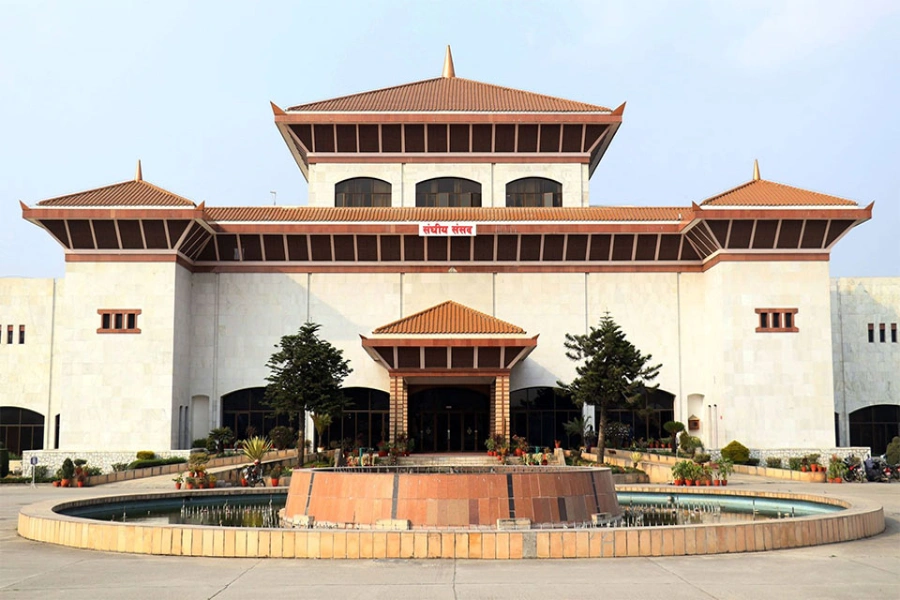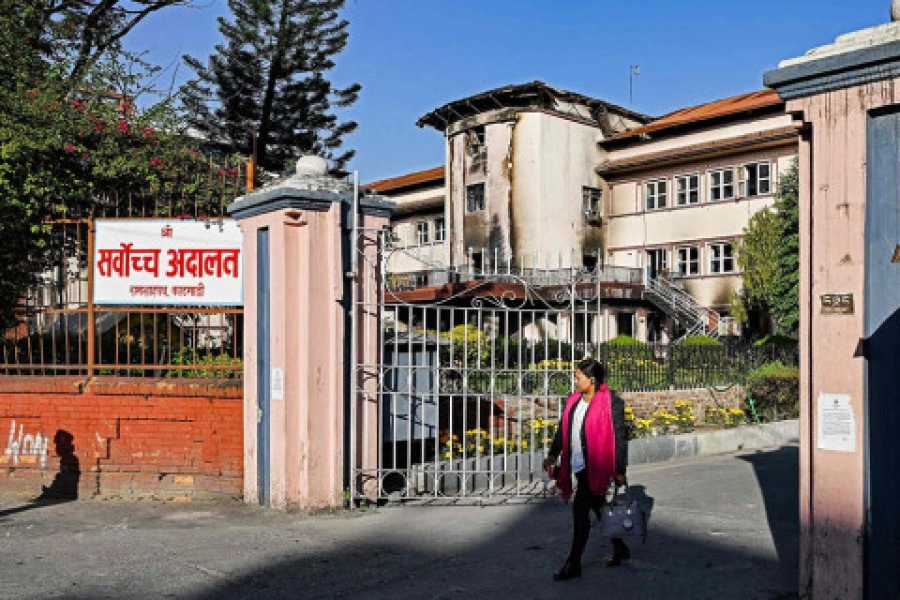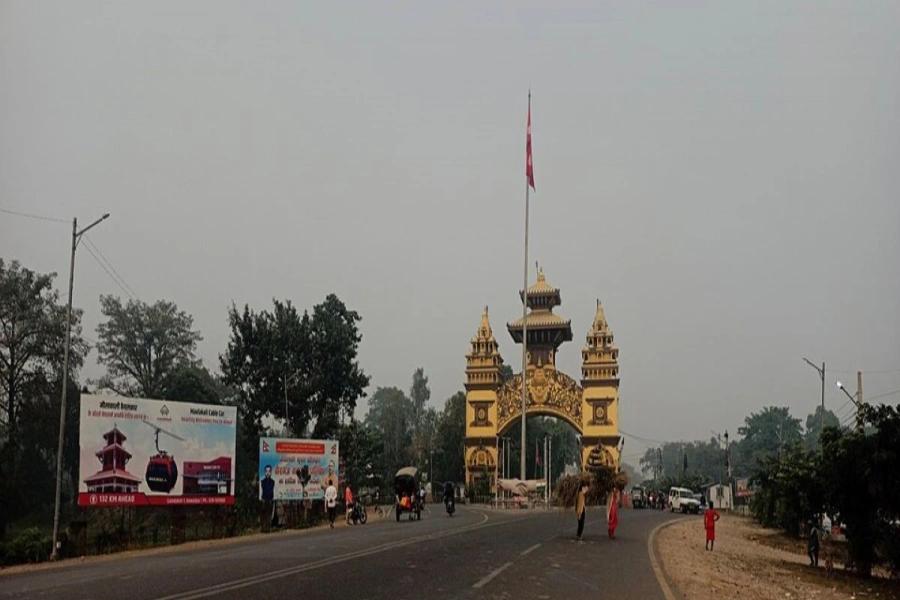The challenges Nepal faces in protecting its agricultural land and ensuring food security for its citizens are huge. The implementation of land use policies and regulations, as well as the conversion of farmland for non-agricultural purposes, remain major issues that require urgent attention.
At least half of Nepal's population is engaged in the agricultural sector, which is also the largest source of employment. However, Nepal's food imports are increasing at an alarming rate. In 2021/22, Nepal's agricultural goods imports from 164 countries amounted to Rs 325 billion. This trend of increasing food dependency raises serious concerns about the future of the agricultural sector in the country. As a result, farmers are quickly moving to other sectors. There are several causes of the current challenges facing agricultural production in Nepal, which makes identifying solutions difficult and exacerbates the problem of food insecurity.
The inadequate access of landless people and farmers to arable land is a significant factor that contributes to lower investment in agriculture, thereby increasing food insecurity and dependence. Marginalized rural households in the Inner Terai and hill areas are often sharecroppers without any formal or customary land tenure. They are obligated to landlords for sharecropping, with nominal incentives. With only 18 percent of cultivated areas in Nepal having year-round irrigation facilities, most agricultural households are unable to produce sufficient food to meet their needs. Moreover, the country is highly vulnerable to climate change risks, with more natural disasters such as droughts, floods, and landslides occurring due to climate change. These disasters cause crop loss and disrupt food supplies, especially during the monsoon months.
The conversion of agricultural land to non-agricultural purposes is a significant challenge in Nepal. Farming lands are rapidly being converted into construction sites, with land being transformed into concrete structures for various projects such as road construction, airports, industrial areas, tourist spots, conservation parks, and special economic zones. Despite these projects being justified in the name of public interest, they leave farmers and peasants, who have been working on the land for generations, without alternative livelihoods. As a result, they are forced to rely on the market for their survival. Therefore, it is crucial to prioritize enabling landless and small-scale farmers to continue farming and to protect agricultural land. This should be a significant concern to address.
Groundwater for food security

The government has introduced a number of legal tools aiming at optimal use of land resources including farmland protection. The National Land Use Policy was revised in 2015 and the Federal Parliament endorsed the Land Use Act in 2019, and formulated land use rules in 2022 to regulate land management and ensure sustainable use of land resources. The aim of these legal tools is to utilize land resources and achieve long-term benefits through land classification, optimal use and effective management to achieve the national goal.
The land use act has prioritized agricultural areas and allows using other categories of land for agriculture until it is used for its specified purpose. Based on topography, aptitude and appropriateness, the existing use and necessity, available land will be classified in 10 different categories: agricultural, residential, commercial, industrial, mining-mineral, forest, river-lake-wetland, public use and cultural-archaeological.
In theory, policies, acts, and rules related to land use provide a solid foundation for the optimal utilization of land resources and the preservation of agricultural land. However, the implementation of these provisions is often inadequate. Furthermore, the most concerning issue is that in practice, these legal reforms contradict the very objectives they were designed to achieve.
Under the land use act, local governments are given special powers to prepare a long-term land use plan by conducting a thorough study of various factors, such as the local context, land types, population growth rate, land requirements for food production and settlement, and the increase in demand for land due to economic and infrastructure development. Based on this approach and vision paper, local governments will need to develop a land use plan that includes land use classification. Approval for the plan should be obtained from the Land Use Council at their respective level of governance to implement it.
The Local Implementation Committee has critical roles and responsibilities for the implementation of the land use plan and utilization of land approved by the local Land Use Council. This Council prepares a land use plan in each ward, implements an awareness program on land protection and sustainable use, monitors whether agricultural land is utilized or left fallow, identifies public land and arranges its use for public welfare, and recommends individuals/organizations for awards in recognition of their contribution to land use.
Currently, many local governments are working on land use classification by developing their own standards. However, if these practices continue, the country's agricultural land area is likely to reduce by almost half of its current size. For instance, the Mayor of Kankai Municipality, Jhapa, recently presented at an international workshop organized by the Land Management Training Center on 16-17 February on land use and land administration in Dhulikhel. The mayor stated that the municipality has 32% agricultural land, but only 15% of it will be recognized through the new land classification. This trend appears to be similar in other local governments as well. For example, the Hetauda Sub-metropolitan City will not be able to categorize even a single meter of land in the agricultural land category. This is a significant concern, not only from the perspective of food sovereignty but also from a health and environmental standpoint.
The lack of progress in land use classification cannot be solely attributed to the local governments. The restrictive provision of only six months to categorize the agricultural land of the respective local governments is a significant factor. This provision has added unnecessary pressure on local governments without providing adequate support to develop the necessary capacity. Moreover, the absence of clear directives is foreseen as the biggest implementation challenge of the land use act. Additionally, all 753 local governments and their wards must prepare land use plans for which no mechanism has been suggested to provide the required human resources and technical support. This lack of support may further hinder the successful implementation of the land use act.
If the land use plan can be properly implemented, it has the potential to change land use patterns, increase productivity, and promote sustainable environmental management. The current constitution has provisions that recognize food sovereignty as a fundamental right for all citizens. Therefore, the protection and planning of farmland should be a top priority for all local governments in the areas where food is produced. In the past, reactionary resistance to sustainable food production has enabled the food market to slide into unfettered liberalization, which has harmed local production and made people reliant on foreign imports even for basic foodstuffs. This situation puts farmers' livelihoods at risk and weakens the national economy as a whole. Therefore, it is essential to recognize the problem in real-time and for the concerned ministries to show commitment and drive towards mitigating the adverse effects of delays and necessary preparations.




































